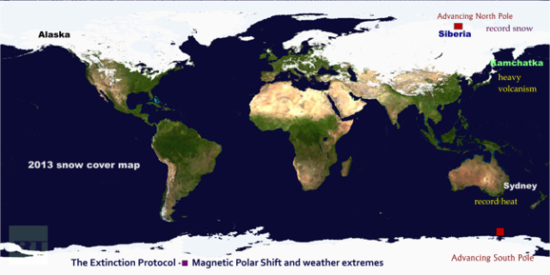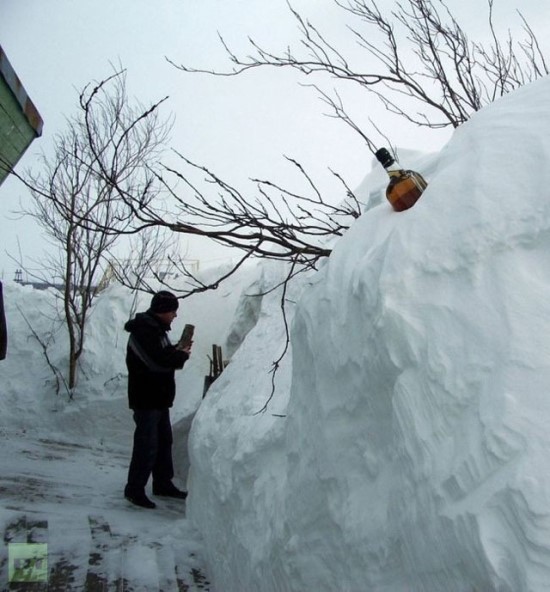지구촌 곳곳의 기상이변 소식!
2013. 1. 22. 09:16ㆍ자연재해와 전염병
지구촌 곳곳의 기상이변 소식!
칠레 빌라리카 화산은 깊이 자리잡은 분화구에서
캘리포니아 맘모쓰 화산은
1.3급 지진같은 낮은 강도의 지진이 다발적으로 발생,
멕시코 몰리마화산, 과테말라 후에고 화산, 산타마리아, 파카야 등지에 화산활동이 다발적으로 발생!
29: Global volcanic activity report for January 19, 2013
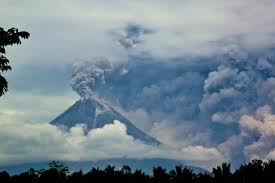 January 19, 2013 – GEOLOGY – A low-level earthquake swarm continues beneath Mammoth Mountain volcano (CA) (station MMS), with a M1.3 event recorded earlier today. Dilatometer data from instruments located within Long Valley Caldera show an inflection in trend at the swarm onset on or around 15 January 2013. A series of small explosions (green signals) followed a very subtle increase in volcanic seismicity in the past day at the Colima volcano (Mexico). Exhalations of gas and ash have increased slightly during the past 24 hours at Popocatepetl volcano. A mixture of wind noise, and small local and larger regional earthquakes dot seismograms at Guatemalan volcanoes Fuego (station FG3), Santa Maria (station STG6) and Pacaya (station PCG) today. Santa Maria seismograms show the most volcanic activity with occasional increases in tremor tucked within the “noisy” record. Recent MODIS thermal imagery shows the active lava flows descending the flanks of Fuego and the Santiaguito Dome Complex (Santa Maria). A few larger magnitude volcanic earthquakes punctuate an otherwise slowly decreasing trend in seismicity at San Cristobal volcano (Nicaragua) (station CRIN) today. Volcanic tremor amplitude continues to be unstable at Masaya volcano (station MASN), and frequent, low-amplitude volcanic earthquakes continue to plague Concepcion volcano (station CONN). An episode of larger magnitude volcano-tectonic earthquakes also affected Nevado Del Ruiz volcano (Colombia) (station OLLZ) late yesterday. Numerous low-amplitude volcanic earthquakes and occasional periods of volcanic tremor continue at the volcano. Numerous small seismic events continue at nearby Machin volcano (station CIMA) as well. The tremor-like signal late in the record at Machin is due to cultural noise, not the volcano. Strong degassing continues at Reventador volcano (Ecuador) (station CONE), accompanied by abundant low-frequency seismicity, including volcanic tremors. Over 1100 small volcanic earthquakes, along with low-level volcanic tremors have occurred during the past 24 hours at Copahue volcano (Chile-Argentina border). Weather obscures any surface activity accompanying the seismicity. –Earthquake Report
January 19, 2013 – GEOLOGY – A low-level earthquake swarm continues beneath Mammoth Mountain volcano (CA) (station MMS), with a M1.3 event recorded earlier today. Dilatometer data from instruments located within Long Valley Caldera show an inflection in trend at the swarm onset on or around 15 January 2013. A series of small explosions (green signals) followed a very subtle increase in volcanic seismicity in the past day at the Colima volcano (Mexico). Exhalations of gas and ash have increased slightly during the past 24 hours at Popocatepetl volcano. A mixture of wind noise, and small local and larger regional earthquakes dot seismograms at Guatemalan volcanoes Fuego (station FG3), Santa Maria (station STG6) and Pacaya (station PCG) today. Santa Maria seismograms show the most volcanic activity with occasional increases in tremor tucked within the “noisy” record. Recent MODIS thermal imagery shows the active lava flows descending the flanks of Fuego and the Santiaguito Dome Complex (Santa Maria). A few larger magnitude volcanic earthquakes punctuate an otherwise slowly decreasing trend in seismicity at San Cristobal volcano (Nicaragua) (station CRIN) today. Volcanic tremor amplitude continues to be unstable at Masaya volcano (station MASN), and frequent, low-amplitude volcanic earthquakes continue to plague Concepcion volcano (station CONN). An episode of larger magnitude volcano-tectonic earthquakes also affected Nevado Del Ruiz volcano (Colombia) (station OLLZ) late yesterday. Numerous low-amplitude volcanic earthquakes and occasional periods of volcanic tremor continue at the volcano. Numerous small seismic events continue at nearby Machin volcano (station CIMA) as well. The tremor-like signal late in the record at Machin is due to cultural noise, not the volcano. Strong degassing continues at Reventador volcano (Ecuador) (station CONE), accompanied by abundant low-frequency seismicity, including volcanic tremors. Over 1100 small volcanic earthquakes, along with low-level volcanic tremors have occurred during the past 24 hours at Copahue volcano (Chile-Argentina border). Weather obscures any surface activity accompanying the seismicity. –Earthquake Report
러시아는 기록적 강설량이고,
시드니는 기록적 혹서가 오는데
이게 자기극 역전의 전조인가,
그렇다면 기상혼란이 다가오는가?
Russia: record snow, Sydney: record heat. Is the magnetic field reversal throwing the planet’s weather into chaos?
No dramatic effects? “Many doomsday theorists have tried to take this natural geological occurrence and suggest it could lead to Earth’s destruction. But would there be any dramatic effects? The answer, from the geologic and fossil records we have from hundreds of past magnetic polarity reversals, seems to be ‘no.’” -NASA website
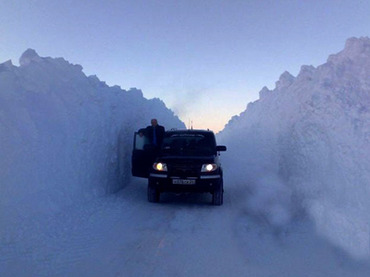 January 19, 2013 – RUSSIA – Unrelenting snowfalls have caused unprecedented chaos in Russia. Over the past week, the country has seen scores of traffic accidents, flight delays and, in some cases, the complete isolation of some remote settlements and towns. While the snowstorms have caused inconvenience for large population centers in western Russia, they have been life-threatening further east in the country. Falling snow and ice caused many accidents due to poor visibility and bad road conditions. Moscow witnessed a 13-kilometer jam on MKAD, one of the city’s main highways, reducing speeds to 10 to 25 kph in the capital. More than 12,000 snow removal trucks worked around-the-clock to clean up the mess, but their efforts did little, with the city coming to an effective standstill. The chair of the Duma’s transport committee called for local transport officials to face legal sanctions for failing to cope with the winter weather. “Until local bureaucrats face the wrath of the law, winter will always be a surprise occurrence. They will continue to do nothing, as people suffer,” Mikhail Bryachak told Kommersant FM radio.Thepolar circle city of Norilsk has been buried under 10 feet of snow – entire apartment blocks, markets, stores and offices were buried under snow overnight. Banks of snow were as high as two people put together, reaching the second-story windows of some apartment buildings. Cars, stores, garages were blocked. Norilsk metropolitan workers were forced to dig passageways through the snow banks to create access between the outside world and the barricaded city. Meanwhile, icicles up to three feet in length have formed off the ledges of buildings, breaking at random and causing a lethal hazard for pedestrians below. Elsewhere, the extreme weather continues. In the Altai Republic in Western Siberia, 12 Russian settlements were isolated because of the snowstorm. Seven settlements, with a total population of 1,300 people, remain cut off from the outside world due to the snow drifts. Emergency crews are currently en route to deliver needed supplies to the stranded populations. Snow accompanied by strong winds has caused flight delays in the airport of Russia’s far eastern town of Petropavlovsk-Kamchatsky. The runway has been cleared, but planes are not risking takeoff due to strong side-winds. Flights were also delayed in Russia’s easternmost cities of Vladivostok and Khabarovsk. More snow storms are predicted in Western Siberia and the Western Urals over the weekend. In the end of 2012, Russia saw extreme winter not witnessed since 1938. The coldest-ever December in Russia led to the evacuation of hundreds of people in Siberia, where temperatures fell below -50 degrees Celsius; Moscow also saw its coldest night ever for the season. More than 90 Russians died during the cold snap, and more than 600 people were taken to hospital due to the extremely dangerous weather, which is 10 degrees below the December norm. Nearly 200 people have died throughout Russia as a direct result of weather-related accidents and hypothermia this season, according to official statistics, although the extreme conditions have likely contributed to many more fatalities. –RT
January 19, 2013 – RUSSIA – Unrelenting snowfalls have caused unprecedented chaos in Russia. Over the past week, the country has seen scores of traffic accidents, flight delays and, in some cases, the complete isolation of some remote settlements and towns. While the snowstorms have caused inconvenience for large population centers in western Russia, they have been life-threatening further east in the country. Falling snow and ice caused many accidents due to poor visibility and bad road conditions. Moscow witnessed a 13-kilometer jam on MKAD, one of the city’s main highways, reducing speeds to 10 to 25 kph in the capital. More than 12,000 snow removal trucks worked around-the-clock to clean up the mess, but their efforts did little, with the city coming to an effective standstill. The chair of the Duma’s transport committee called for local transport officials to face legal sanctions for failing to cope with the winter weather. “Until local bureaucrats face the wrath of the law, winter will always be a surprise occurrence. They will continue to do nothing, as people suffer,” Mikhail Bryachak told Kommersant FM radio.Thepolar circle city of Norilsk has been buried under 10 feet of snow – entire apartment blocks, markets, stores and offices were buried under snow overnight. Banks of snow were as high as two people put together, reaching the second-story windows of some apartment buildings. Cars, stores, garages were blocked. Norilsk metropolitan workers were forced to dig passageways through the snow banks to create access between the outside world and the barricaded city. Meanwhile, icicles up to three feet in length have formed off the ledges of buildings, breaking at random and causing a lethal hazard for pedestrians below. Elsewhere, the extreme weather continues. In the Altai Republic in Western Siberia, 12 Russian settlements were isolated because of the snowstorm. Seven settlements, with a total population of 1,300 people, remain cut off from the outside world due to the snow drifts. Emergency crews are currently en route to deliver needed supplies to the stranded populations. Snow accompanied by strong winds has caused flight delays in the airport of Russia’s far eastern town of Petropavlovsk-Kamchatsky. The runway has been cleared, but planes are not risking takeoff due to strong side-winds. Flights were also delayed in Russia’s easternmost cities of Vladivostok and Khabarovsk. More snow storms are predicted in Western Siberia and the Western Urals over the weekend. In the end of 2012, Russia saw extreme winter not witnessed since 1938. The coldest-ever December in Russia led to the evacuation of hundreds of people in Siberia, where temperatures fell below -50 degrees Celsius; Moscow also saw its coldest night ever for the season. More than 90 Russians died during the cold snap, and more than 600 people were taken to hospital due to the extremely dangerous weather, which is 10 degrees below the December norm. Nearly 200 people have died throughout Russia as a direct result of weather-related accidents and hypothermia this season, according to official statistics, although the extreme conditions have likely contributed to many more fatalities. –RT
Coincidence? While northern Russia sees record snowfall and cold temperatures, Sydney Australia, in the southern Hemisphere, is experiencing searing temperatures of 46 C (115.7°F). Is this only the beginning of more dramatic climate changes to come?
 Record heat in southern hemisphere: The mercury topped 45.8 at Sydney’s Observatory Hill at 2.55pm, breaking the previous record set in 1939 by half a degree. The city’s highest temperature was a scorching 46.5 degrees, recorded in Penrith at 2.15pm, while Camden, Richmond and Sydney Airport all reached 46.4 degrees. More than 220 people had been treated for heat exposure or fainting by late afternoon, the Ambulance Service of NSW said. The heat-wave also stranded thousands of commuters, with dozens of trains delayed as steel wires buckled and a hose used to run a key signaling system melted. on the central coast, the heat caused an overhead wire to buckle onto a train at about 1.30pm, trapping about 250 passengers for half an hour. The monorail ground to a halt, spitting sparks that started a soon-extinguished grass fire next to Darling Harbour. -MOL
Record heat in southern hemisphere: The mercury topped 45.8 at Sydney’s Observatory Hill at 2.55pm, breaking the previous record set in 1939 by half a degree. The city’s highest temperature was a scorching 46.5 degrees, recorded in Penrith at 2.15pm, while Camden, Richmond and Sydney Airport all reached 46.4 degrees. More than 220 people had been treated for heat exposure or fainting by late afternoon, the Ambulance Service of NSW said. The heat-wave also stranded thousands of commuters, with dozens of trains delayed as steel wires buckled and a hose used to run a key signaling system melted. on the central coast, the heat caused an overhead wire to buckle onto a train at about 1.30pm, trapping about 250 passengers for half an hour. The monorail ground to a halt, spitting sparks that started a soon-extinguished grass fire next to Darling Harbour. -MOL
중미의 커피농장에는 곰팡이가 창궐해 피해를 입는다! Coffee growers in Central America threatened by fungus outbreak
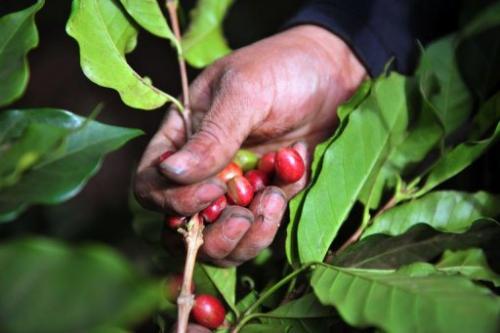 January 19, 2013 – CENTRAL AMERICA - Entire families depend on work from the coffee-growing industry in Central America, which employs more than 1.5 million people to produce one of the world’s most renowned Arabica beans. But in September, two months before the annual harvest, the fungus known as roya began to spread due to a lack of preventive measures and the effects of climate change, including high temperatures and drought, according to experts, government officials and industry sources. “The situation is very serious,” Jose Buitrago, president of Nicaragua’s Coffee Exporters Association, told AFP. “It will get worse if measures are not taken.” The fungus, hemileia vastatrix, discolors and dries up coffee leaves, an effect that also gives roya the name of “leaf rust.” The parasite has latched on to 35 percent of the 958,000 hectares of sown crops, which will mean a loss of two million coffee bean bags of 46 kilograms (100 pounds) each, industry officials told AFP. This would represent a loss of $300 million at the current price of $150 per bag, the sources said.
January 19, 2013 – CENTRAL AMERICA - Entire families depend on work from the coffee-growing industry in Central America, which employs more than 1.5 million people to produce one of the world’s most renowned Arabica beans. But in September, two months before the annual harvest, the fungus known as roya began to spread due to a lack of preventive measures and the effects of climate change, including high temperatures and drought, according to experts, government officials and industry sources. “The situation is very serious,” Jose Buitrago, president of Nicaragua’s Coffee Exporters Association, told AFP. “It will get worse if measures are not taken.” The fungus, hemileia vastatrix, discolors and dries up coffee leaves, an effect that also gives roya the name of “leaf rust.” The parasite has latched on to 35 percent of the 958,000 hectares of sown crops, which will mean a loss of two million coffee bean bags of 46 kilograms (100 pounds) each, industry officials told AFP. This would represent a loss of $300 million at the current price of $150 per bag, the sources said.  Central American nations exported 17.5 million bags of coffee during the 2011-2012 cycle, bringing $3.6 billion to the region, and growers had hoped to do even better this season. The harvest begins in November and ends in February. Salvadoran Coffee Research Foundation recommended fertilizing the soil and cutting off all leaves covered in roya, which cannot survive in dead leaves. The Regional International Organization for Plant Protection and Animal Health (OIRSA) will back the measures, but the region, which lacks resources, also plans to seek foreign loans. Guatemala needs $843 million in investments to renew its coffee plantations while Nicaragua is looking at $200 million, according to preliminary industry figures. While roya is plaguing the whole region, Honduras and Nicaragua stand to lose the most as coffee is their main export. It represents $1.4 billion, or 22 percent, of exports for Honduras and $519 million, or 18 pe
Central American nations exported 17.5 million bags of coffee during the 2011-2012 cycle, bringing $3.6 billion to the region, and growers had hoped to do even better this season. The harvest begins in November and ends in February. Salvadoran Coffee Research Foundation recommended fertilizing the soil and cutting off all leaves covered in roya, which cannot survive in dead leaves. The Regional International Organization for Plant Protection and Animal Health (OIRSA) will back the measures, but the region, which lacks resources, also plans to seek foreign loans. Guatemala needs $843 million in investments to renew its coffee plantations while Nicaragua is looking at $200 million, according to preliminary industry figures. While roya is plaguing the whole region, Honduras and Nicaragua stand to lose the most as coffee is their main export. It represents $1.4 billion, or 22 percent, of exports for Honduras and $519 million, or 18 pe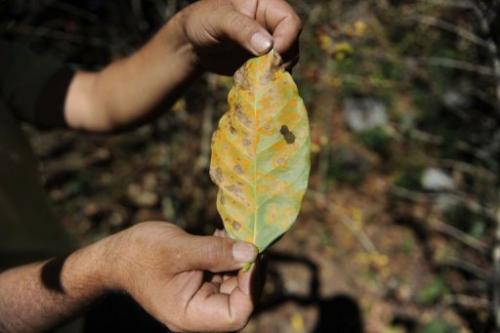 rcent, for Nicaragua. In Honduras, considered Central America’s coffee king, the fungus has devastated 10 percent of 280,000 hectares of crops, according to the head of the Honduran Coffee Institute, Victor Molina. The fungus has hit 30 percent of Nicaragua’s 128,000 hectares of coffee, prompting the government and the industry to seek funds to help 35,000 growers. Guatemala’s National Coffee Association warned that roya has reached 67 percent of its 274,000 hectares, threatening to leave 200,000 people without work. El Salvador could be forced to destroy 30 percent of its 161,000 hectares of coffee, while Costa Rica declared a sanitary emergency after the parasite invaded 30 percent of its 93,000 hectares. “Producers let their guard down. Costa Rica could lose more than 250,000 (coffee bags),” said Costa Rican Deputy Agriculture Minister Xinia Chaves. “The entire coffee region is affected, some more than others,” Marcelino Samayo, director general of El Salvador’s coffee exporters’ association. Central America’s coffee plantations are held by more than 300,000 producers, and the majority is small- and medium-sized growers with few means to control the outbreak. Governments and producers will try to contain the invasion by pruning infected leaves, putting up effective shading systems and planting fungus-resistant seeds to replace dead coffee plants, said Nicaraguan Agriculture Minister Ariel Bucardo. –Physics
rcent, for Nicaragua. In Honduras, considered Central America’s coffee king, the fungus has devastated 10 percent of 280,000 hectares of crops, according to the head of the Honduran Coffee Institute, Victor Molina. The fungus has hit 30 percent of Nicaragua’s 128,000 hectares of coffee, prompting the government and the industry to seek funds to help 35,000 growers. Guatemala’s National Coffee Association warned that roya has reached 67 percent of its 274,000 hectares, threatening to leave 200,000 people without work. El Salvador could be forced to destroy 30 percent of its 161,000 hectares of coffee, while Costa Rica declared a sanitary emergency after the parasite invaded 30 percent of its 93,000 hectares. “Producers let their guard down. Costa Rica could lose more than 250,000 (coffee bags),” said Costa Rican Deputy Agriculture Minister Xinia Chaves. “The entire coffee region is affected, some more than others,” Marcelino Samayo, director general of El Salvador’s coffee exporters’ association. Central America’s coffee plantations are held by more than 300,000 producers, and the majority is small- and medium-sized growers with few means to control the outbreak. Governments and producers will try to contain the invasion by pruning infected leaves, putting up effective shading systems and planting fungus-resistant seeds to replace dead coffee plants, said Nicaraguan Agriculture Minister Ariel Bucardo. –Physics
시카고 상공에 눈이 사라져 기상학자들은 당황!
Meteorologists confounded, as snow disappears from Chicago skies
 January 19, 2013 – CHICAGO, Il - Whether you like it or not, we will officially break another record for no snow today, according to the National Weather Service. “It’s pretty incredible,” said NWS meteorologist Gino Izzi. “It’s the middle of January and there’s no snow on the ground. Dallas, Texas has had more snow than us.”Izzi said the last time we have gone this far into the season without a 1-inch calendar day of snowfall was Jan. 17, 1899. If we get no snow today — and there is none in the forecast through the weekend — it’s a record. Additionally, it’s been 326 days and counting since we’ve had a 1-inch snow cover on the ground. That record was officially broken nine days ago, according to Izzi. “If you think about it, we’re just a little over a month away from basically going an entire year without snow in Chicago,” Izzi said. Izzi attributes the lack of snow, in part, to luck. “Some of it has just been luck but there have been some pretty good storms that have missed us,” he said. While snowfall is not in the stars for the area, very cold temperatures are. “We’re watching a little system Sunday night that will bring a really, really intense cold snap – the coldest we’ve been in nearly two years,” Izzi said. Highs will “struggle” to reach the teens by Monday into Tuesday. “We could have lows not very far from zero,” Izzi said. The Illinois Tollway will launch its Zero Weather Road Patrols this weekend to assist drivers stranded in their cars during times of extreme cold. –Chicago Tribune
January 19, 2013 – CHICAGO, Il - Whether you like it or not, we will officially break another record for no snow today, according to the National Weather Service. “It’s pretty incredible,” said NWS meteorologist Gino Izzi. “It’s the middle of January and there’s no snow on the ground. Dallas, Texas has had more snow than us.”Izzi said the last time we have gone this far into the season without a 1-inch calendar day of snowfall was Jan. 17, 1899. If we get no snow today — and there is none in the forecast through the weekend — it’s a record. Additionally, it’s been 326 days and counting since we’ve had a 1-inch snow cover on the ground. That record was officially broken nine days ago, according to Izzi. “If you think about it, we’re just a little over a month away from basically going an entire year without snow in Chicago,” Izzi said. Izzi attributes the lack of snow, in part, to luck. “Some of it has just been luck but there have been some pretty good storms that have missed us,” he said. While snowfall is not in the stars for the area, very cold temperatures are. “We’re watching a little system Sunday night that will bring a really, really intense cold snap – the coldest we’ve been in nearly two years,” Izzi said. Highs will “struggle” to reach the teens by Monday into Tuesday. “We could have lows not very far from zero,” Izzi said. The Illinois Tollway will launch its Zero Weather Road Patrols this weekend to assist drivers stranded in their cars during times of extreme cold. –Chicago Tribune
 More extremes: (Jan 18) It was a wild day for weather around much of the world today, as snow hit the southeastern United States and Britain while record heat baked Australia. In Virginia, 13 inches of snow hit some areas, while in Mississippi two to four inches fell in places, reports the AP. At least one car accident death was attributed to the weather, and thousands lost power. Meanwhile in Britain, snow and ice closed one Heathrow Airport runway for 45 minutes and caused 180 flights to be canceled. Up to 12 inches of snow are expected in some areas around London today, according to the AP. Down under, however, much of Australia baked today. The temperature reached 114.4 degrees Fahrenheit in Sydney, breaking the old record of 113.5 set in 1939, reports AFP. Just west of the city in Penrith, the mercury climbed even higher to nearly 116. What’s being called a “dome of heat” over the country’s outback center is creating a heat wave over 70% of Australia. “The length, extent, and severity of the current heat wave are unprecedented in the measurement record,” said a government climate change report. –Newser
More extremes: (Jan 18) It was a wild day for weather around much of the world today, as snow hit the southeastern United States and Britain while record heat baked Australia. In Virginia, 13 inches of snow hit some areas, while in Mississippi two to four inches fell in places, reports the AP. At least one car accident death was attributed to the weather, and thousands lost power. Meanwhile in Britain, snow and ice closed one Heathrow Airport runway for 45 minutes and caused 180 flights to be canceled. Up to 12 inches of snow are expected in some areas around London today, according to the AP. Down under, however, much of Australia baked today. The temperature reached 114.4 degrees Fahrenheit in Sydney, breaking the old record of 113.5 set in 1939, reports AFP. Just west of the city in Penrith, the mercury climbed even higher to nearly 116. What’s being called a “dome of heat” over the country’s outback center is creating a heat wave over 70% of Australia. “The length, extent, and severity of the current heat wave are unprecedented in the measurement record,” said a government climate change report. –Newser
인도북부에 8년만에 최대적설량을 기록하다!
하루에 무려 38.6cm
Portions of northern India blanketed with largest snowfall in 8 years
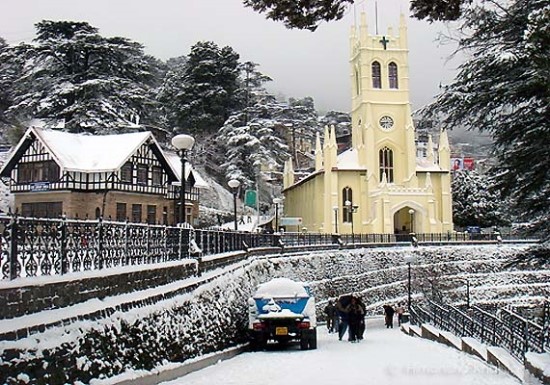 January 19, 2013 – INDIA – The Queen of the Hills, as Shimla was fondly called by the British, recorded the highest snowfall on a single day January in the past eight years, a Met official said here Saturday. Manmohan Singh, director of the meteorological office here, told IANS that the town recorded 38.6 cm snow in the past 24 hours, the highest in the first month of the year since 2005. “The maximum snow in a day in January was recorded was in 2005. It was 33.2 cm Jan 18,” he said, adding: “On two consecutive days (Jan 17 and 18 this year) the town got 63.6 cm.” Singh said snow and heavy rain in the region in the past two days was mainly due to induced cyclonic circulation with the western disturbances. As per records of the Met office, there was no snowfall at all in Shimla for two consecutive years in January from 2006. In 2008, there was just 1 cm snow throughout the month, while it was 8.7 cm in 2009, 1.8 cm in 2010 and 8.5 cm in 2011. In 2005, there was 94.3 cm snow in January but it was spread over seven days (Jan 17, 18, 21, 22, 27, 28 and 28). In 2004, it was 96.6 cm snow Jan 23, 26, 30 and 31. on Jan 23, 2004, alone, Shimla saw 30 cm snow. However, in January last year the town saw 95 cm snow, the second highest after 2004 (96.6 cm). “But last year the highest snow on a single day was just 11 cm (Jan 16),” Singh added. Old-timers recalled that for almost two decades, Shimla has not recorded the kind of heavy snowfall that used to paralyze life in winter for more than a fortnight in the past. M.R. Kaundal, retired government employee who settled in Shimla in 1945, said till the 1980s, heavy snowfall was a normal feature of the town. “As far as I remember the last time it occurred was during the winter of 1990-91 when the town was cut off from the rest of the country for more than two weeks due to snow. Tourists had to hire porters to leave the town, and trudge miles,” he said. According to Compendium of Environmental Statistics, Himachal Pradesh – 2012, compiled by the state’s department of economics and statistics, the state’s minimum average temperature, which was registered at 5.6 degrees Celsius in 1971-72, is now 5.8 degrees. –India TV News
January 19, 2013 – INDIA – The Queen of the Hills, as Shimla was fondly called by the British, recorded the highest snowfall on a single day January in the past eight years, a Met official said here Saturday. Manmohan Singh, director of the meteorological office here, told IANS that the town recorded 38.6 cm snow in the past 24 hours, the highest in the first month of the year since 2005. “The maximum snow in a day in January was recorded was in 2005. It was 33.2 cm Jan 18,” he said, adding: “On two consecutive days (Jan 17 and 18 this year) the town got 63.6 cm.” Singh said snow and heavy rain in the region in the past two days was mainly due to induced cyclonic circulation with the western disturbances. As per records of the Met office, there was no snowfall at all in Shimla for two consecutive years in January from 2006. In 2008, there was just 1 cm snow throughout the month, while it was 8.7 cm in 2009, 1.8 cm in 2010 and 8.5 cm in 2011. In 2005, there was 94.3 cm snow in January but it was spread over seven days (Jan 17, 18, 21, 22, 27, 28 and 28). In 2004, it was 96.6 cm snow Jan 23, 26, 30 and 31. on Jan 23, 2004, alone, Shimla saw 30 cm snow. However, in January last year the town saw 95 cm snow, the second highest after 2004 (96.6 cm). “But last year the highest snow on a single day was just 11 cm (Jan 16),” Singh added. Old-timers recalled that for almost two decades, Shimla has not recorded the kind of heavy snowfall that used to paralyze life in winter for more than a fortnight in the past. M.R. Kaundal, retired government employee who settled in Shimla in 1945, said till the 1980s, heavy snowfall was a normal feature of the town. “As far as I remember the last time it occurred was during the winter of 1990-91 when the town was cut off from the rest of the country for more than two weeks due to snow. Tourists had to hire porters to leave the town, and trudge miles,” he said. According to Compendium of Environmental Statistics, Himachal Pradesh – 2012, compiled by the state’s department of economics and statistics, the state’s minimum average temperature, which was registered at 5.6 degrees Celsius in 1971-72, is now 5.8 degrees. –India TV News
시드니는 섭씨 46.5도의 혹서로 지글거린다!
Sydney scorches in record high temperatures of 46.5 degrees (115.7°F)
January 19, 2013 – SYDNEY - Sydney endured its hottest ever day on Friday, with records smashed across the city and thousands of people suffering from the heat. The mercury topped 45.8 at Sydney’s Observatory Hill at 2.55pm, breaking the previous record set in 1939 by half a degree. The city’s highest temperature was a scorching 46.5 degrees (115.7°F), recorded in Penrith at 2.15pm, while Camden, Richmond and Sydney Airport all reached 46.4 degrees. More than 220 people had been treated for heat exposure or fainting by late afternoon, the Ambulance Service of NSW said. The heatwave also stranded thousands of commuters, with dozens of trains delayed as steel wires buckled and a hose used to run a key signaling system melted. on the central coast, the heat caused an overhead wire to buckle onto a train at about 1.30pm, trapping about 250 passengers for half an hour. The monorail ground to a halt, spitting sparks that started a soon-extinguished grass fire next to Darling Harbour. More serious fires raged across NSW and Victoria, including about a dozen blazes that burned out of control in coastal regions of NSW from the Hunter Valley to the south coast. In Victoria a man’s body was found in a burnt-out car in the town of Seaton in Gippsland. The victim, who is yet to be identified, was the first victim of the bushfires this summer. The conditions in NSW were hellish, firefighters said. “This has made for very difficult conditions and there are a lot of very active fires. There has not been the cloud cover we expected,” said the commissioner of the NSW Rural Fire Service, Shane Fitzsimmons. As temperatures cooled and the southerly approached, lightning strikes sparked multiple small fires across the state, adding further stress to the firefighting effort. By nightfall huge fires were still burning near Cessnock, Coonabarabran, Young and around Bega, but there were no reports of properties destroyed. In Victoria one house was incinerated by a bushfire about 200 kilometres east of Melbourne, which had doubled in size to cover more than 45,000 hectares. Even as thousands of front-line personnel battled the flames, the nation’s peak emergency body – the Australasian Fire and Emergency Service Authorities Council – lodg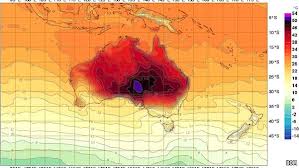 ed a Senate inquiry submission warning of worse to come. The capacity of fire and emergency services to respond to major natural disasters will need to be increased if extreme weather events become more frequent and intense due to climate change, its submission to an inquiry into extreme weather events said. A bigger “surge capacity” was needed to deal with extreme events, such as those seen in the past two weeks. The council’s manager of operations, Paul Considine, said it had sought scientific advice in 2009 on the impacts of climate change on extreme weather. “We’ve been careful. We are not climate science experts,” Mr Considine said. “Our position is the science is there, we have accepted the science that has been presented to us, and if it is correct we can predict these certain results. At the Big Day Out music festival at Olympic Park, some people were treated for heat stress, while others partied under public showers. “We’re almost dying it’s so hot,” said Brittany Markey, 18, from Newcastle. “We’ve been standing under all of the showers and drinking water but it’s so expensive – $4.50 a bottle. When it rained for just a bit, that was awesome but otherwise waiting more than two hours without going under the showers is death. “The water showers and the sprays are keeping us cool. Without them, the heatstroke would definitely be coming on.” -SMH
ed a Senate inquiry submission warning of worse to come. The capacity of fire and emergency services to respond to major natural disasters will need to be increased if extreme weather events become more frequent and intense due to climate change, its submission to an inquiry into extreme weather events said. A bigger “surge capacity” was needed to deal with extreme events, such as those seen in the past two weeks. The council’s manager of operations, Paul Considine, said it had sought scientific advice in 2009 on the impacts of climate change on extreme weather. “We’ve been careful. We are not climate science experts,” Mr Considine said. “Our position is the science is there, we have accepted the science that has been presented to us, and if it is correct we can predict these certain results. At the Big Day Out music festival at Olympic Park, some people were treated for heat stress, while others partied under public showers. “We’re almost dying it’s so hot,” said Brittany Markey, 18, from Newcastle. “We’ve been standing under all of the showers and drinking water but it’s so expensive – $4.50 a bottle. When it rained for just a bit, that was awesome but otherwise waiting more than two hours without going under the showers is death. “The water showers and the sprays are keeping us cool. Without them, the heatstroke would definitely be coming on.” -SMH
디익스팅션프로토콜
http://theextinctionprotocol.wordpress.com/
출처: 주님오시는 발자국소리

'자연재해와 전염병' 카테고리의 다른 글
| 킬러 바이러스의 개발 - 영화 컨테이젼이 현실이 될 것인가? (0) | 2013.01.22 |
|---|---|
| 아마겟돈 바이러스의 출현 가능성을 경고(?)하다 (0) | 2013.01.22 |
| [스크랩] 일본 불공낙하, 현재 태양의 요상한? 코로나홀, 지구궤도 ufo, 3억년 된 톱니바퀴 등등 (0) | 2013.01.22 |
| 백두산 화산, 피할 수 없다면 준비하라 (0) | 2013.01.21 |
| 美 건조한 날씨 이어질듯..곡물가 또 오르나 (0) | 2013.01.20 |

 January 21, 2013
January 21, 2013